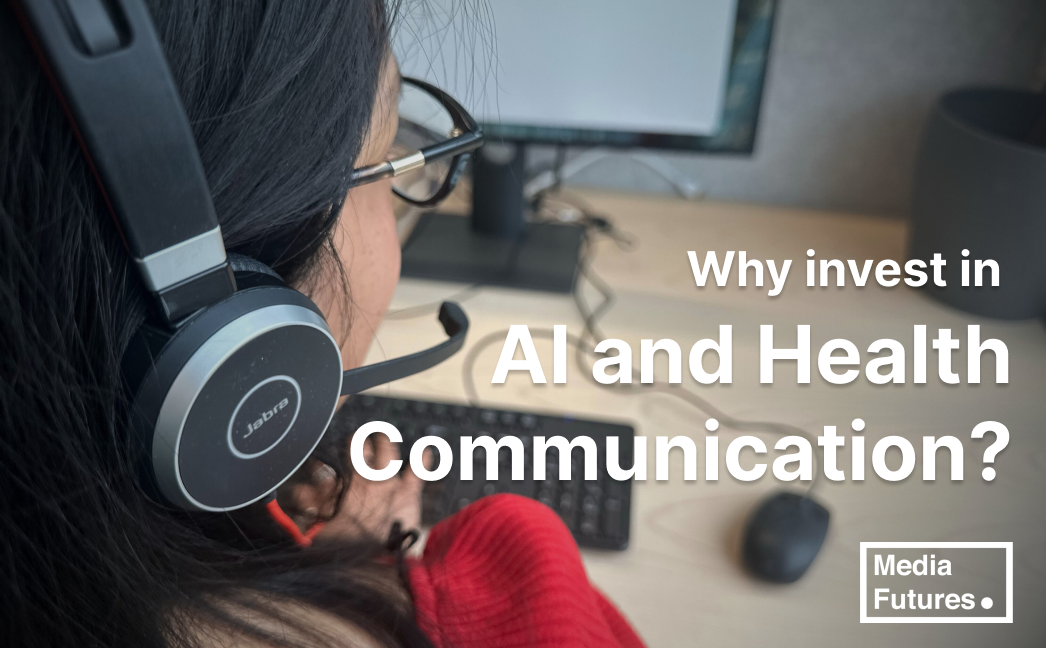Misinformation on social media is undermining trust in health authorities and hindering public health, particularly during COVID-19. Experts are advocating for immediate, accurate health communication to counteract this.
It’s easy to think that the research focus has changed as the media replaced corona news with war updates on their front pages. Whilst health communication was the central theme during the pandemic, verification of media and sharing of misinformation is now a central issue. Or perhaps rather a continuation of the research we have been doing?
The World Health Organization (WHO) has made a tremendous effort with its health information work. When misinformation about the coronavirus was spread on social media, health organization experts worked tirelessly to clear up the information chaos. Their work led to YouTube deleting over a million videos with dangerous misinformation about corona.
Today, it is images and videos from wars that cause confusion. The question of what is authentic and what is manipulated has become central. Who can we trust? This is where the media comes in. We at SFI MediaFutures have both researched the effect of journalism on corona numbers on readers and developed in collaboration with Faktisk.no a Tank Classifier that can help verify images showing military vehicles. It is clear that both health communication and media research are intertwined, with trust in the media and verification of content as core elements in both fields.
AI gives health communication a new dimension
Also in 2024, health communication is more important than ever. It’s about a healthy dialogue between patient and expert. The last few years have shown that an abundance of information and misleading facts can create a gap between the two groups. It’s healthy to be a little skeptical, but when the patient no longer trusts the professional, the danger of spreading misinformation is great.
Today, social media is an important source of health information. According to Gabarron, Bradway, and Årsand, nine out of ten adults in Western countries search and share health information on platforms like Facebook and Instagram. The Ministry of Health and Care Services writes that health communication on social media has contributed to more openness and less stigmatization around women’s health. However, self-diagnosis through TikTok sharpens concern among doctors and psychologists. Much suggests that the population will get information from the health service on social media. Then an ethical approach to algorithms and recommendation systems on social media will play a big role.
Based on societal changes in interaction between health personnel and patient, it is necessary to ensure to optimize the workflow and communication to employees in the health service. Developing technology that identifies misinformation online is one way to improve health communication in Norway. It is important that we strengthen the communication between technology and health and go from analog to digital. Another thing is to support health personnel in their daily work. Right there, UiB and MediaFutures have contributed to a research project that ties a bond between health and media.
Health Communication in Bergen
The research project RE-AIMED helps nurses who are in daily contact with patients by phone. MediaFutures centre leader Christoph Trattner together with Ph.D. candidate Arngeir Berge (employed at the National Competence Center for Emergency Medicine which is a group in NORCE) say that they help telephone operators with what can be natural to ask about and to adapt to how patients present their problem. It’s about leading the population to the right health help at the right level.
We see that there are most initiatives to research the use of AI in specialist health services. Like many other countries, however, there is too little research on primary health services where most patient contact and communication takes place.
Arngeir Berge
AI can help to obtain, process and understand basic health information that is necessary to make appropriate health decisions. It is necessary to research the use of AI in primary health services, which is the largest interface between the population and health workers.
This need has been shown by the corona pandemic, among other things.
The ability to understand the effect of the corona vaccine along with trust in government bodies has indeed been crucial for the course of the pandemic. It was during the years of the corona pandemic that we saw the vulnerability of our health competence. During these years, health communication was under a major test that showed several gaps and weaknesses. A study by Erik Knudsen, associate professor at Mediafutures, showed that Norwegians’ trust in the authorities increased during the pandemic. Work package leader Brita Ytre-Arne and PostDoc John Magnus Dahl researched the effect of journalism on corona numbers on readers. Both their studies show that good health communication strengthens trust in the authorities by informing the population in an honest and objective manner.
Medical telephone assessment assisted by artificial intelligence
The RE-AIMED project is a similar initiative. In the project, Ph.D. candidate Arngeir Berge, together with MediaFutures’ center leader Christoph Trattner (also 10% employed in NORCE) and co-supervisor Frode Guribye, uses a recommendation system as we know it from Netflix. RE-AIMED will help nurses on the phone in the emergency room using AI. There are many different tools a telephone operator must relate to. In RE-AIMED, the recommendation system supports decisions through customized communication. While health personnel usually have several lists and chapters with question suggestions in front of them that they visit while they are on the phone call, a recommendation system will now suggest a short list of questions that may be relevant for the conversation.
The project started in 2020 and does not use ChatGPT, but is based on a database made of questions used by AMK (acute medical communication center) and 116 117 (emergency centers). These telephone services have two different decision support systems that are experience-based, and both are used as inspiration for the AI model that can adapt questions to the conversation. In this way, telephone operators avoid a very scripted conversation and take more into account that patients communicate in different ways.
Arngeir Berge says that the nurses see potential in the new way of working.
“They want to have the opportunity for flexibility in the conversation because not all conversations fit into a script, and it can happen that patients have several problems at the same time. Some things are difficult to fit into traditional decision support,” he says.
Here it is AI that adapts to the conversation instead of humans adapting to AI’s scripts. Furthermore, Berge refers to research that people often fail to comply with recommendations given by automated symptom checkers that are in the form of publicly available apps. When you have a human meeting, it is more binding, specially adapted and therefore easier to trust a professional than an algorithm. This is the reason for building up under the human meeting in communication, according to Berge.
A persistent central challenge is systematic biases in machine learning. This is something the project members are researching to make RE-AIMED a building block for new projects.
Building a new health network
While SFI MediaFutures serves as a leading consortium for responsible media technology and AI in Norway, the health sector has nothing similar yet. Professor at Clinical Institute 2 and Vice Dean for Innovation at the Faculty of Medicine, Helge Ræder, is one of the visionaries who is organizing a network meeting for experts in this field. He thinks it’s time to gather hospitals, health projects, organizations and some researchers in a structure like the one MediaFutures uses, to promote responsible and socially oriented health research.
“There are big movements in health communication and the use of AI in the health sector. A broad collaboration involves gathering experts from medicine, media, IT, ethics, law and many other fields to exploit all the opportunities that technology development brings with it.”, says Ræder.
Several actors have expressed a desire to create a coordinated AI center for the health industry in Vestlandet. Although there is much research in this field, there is a lack of robust clinical validation of these new multimodal technologies, and a professional and public discussion about the opportunities and challenges that come with it. There is a need for a partner network like the one SFI MediaFutures has established. Helse Bergen, UiB and Høgskulen på Vestlandet are looking forward to teaching and dissemination that covers both primary and secondary health service in Norway.
Why not use successful existing organizational structures as a model to start a new network in an overlapping research field? There is room for several national AI centers that are specialists in their fields. Like the pluralism within politics, media, and language in the country, we believe that this principle should also apply to the development of artificial intelligence. We at SFI MediaFutures at least warmly welcome such an initiative.

